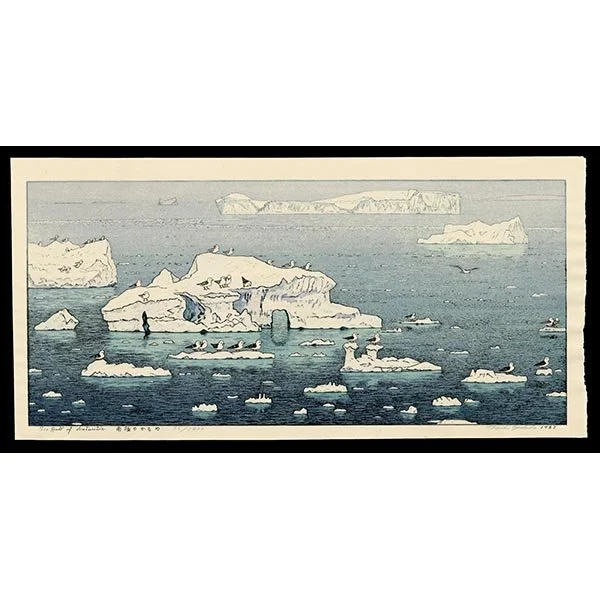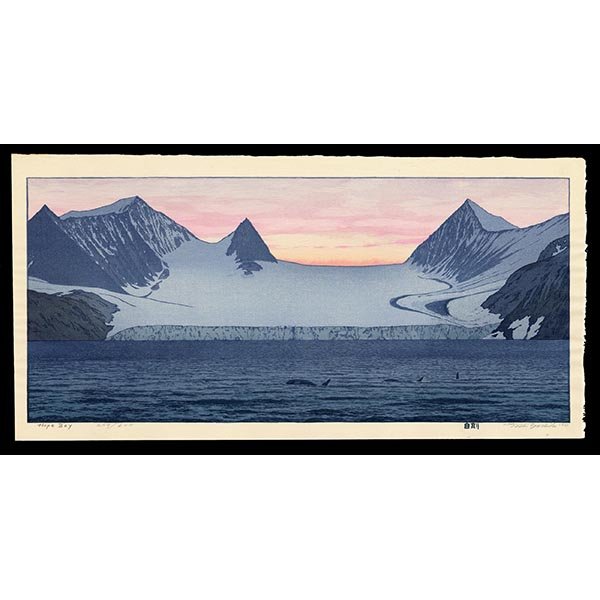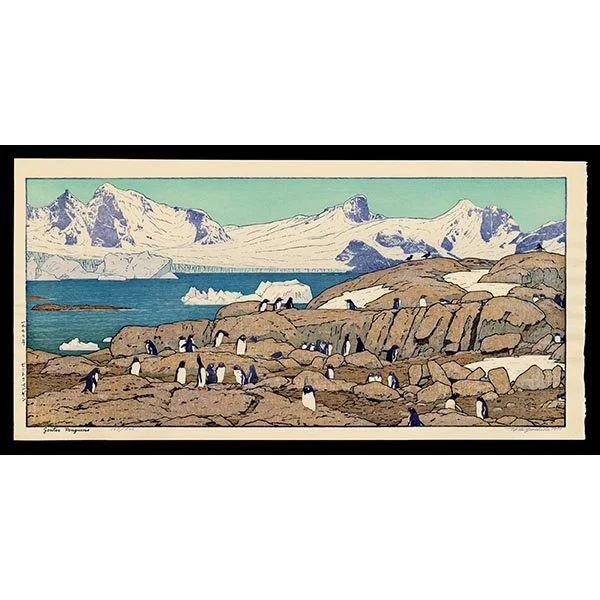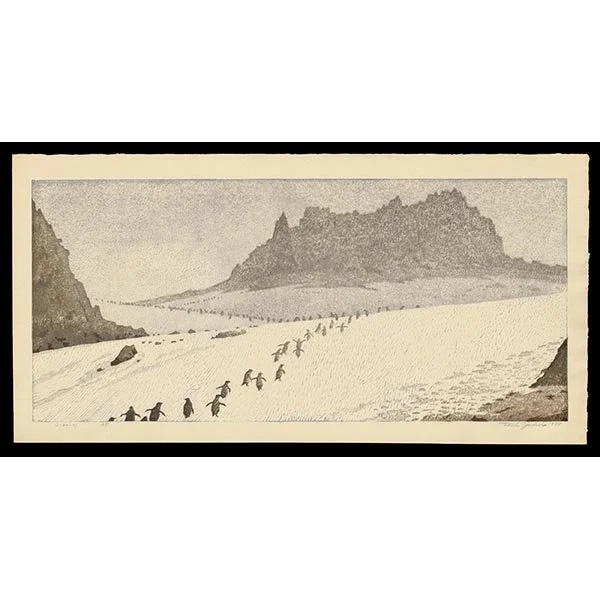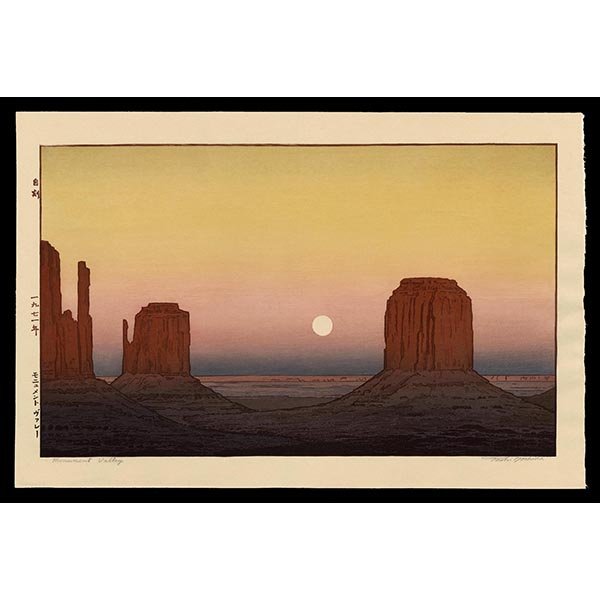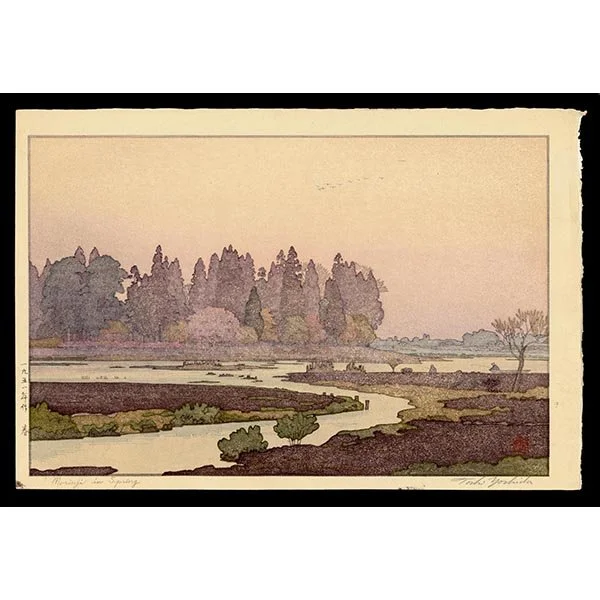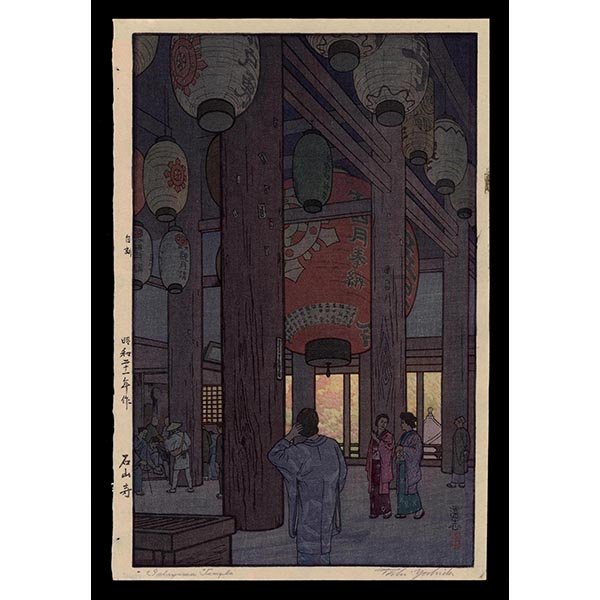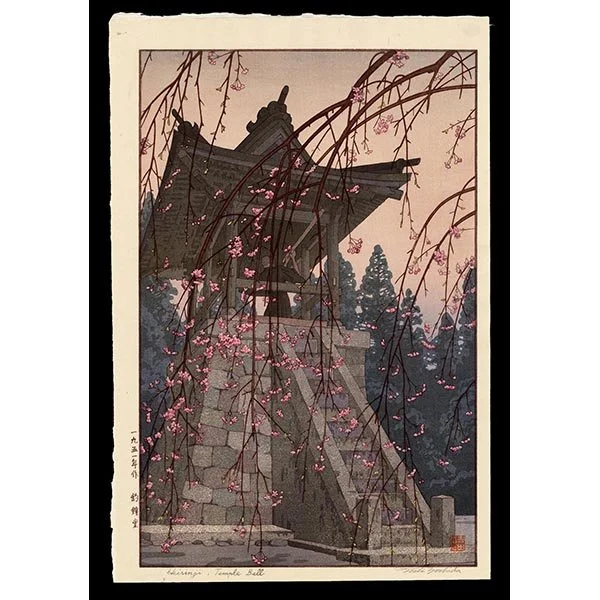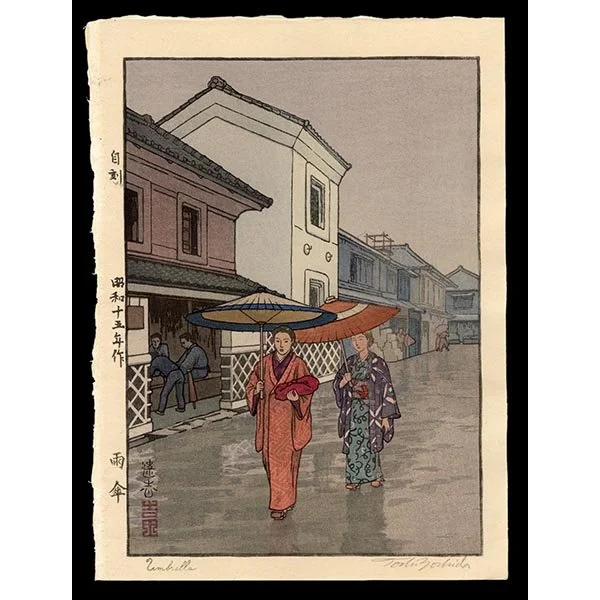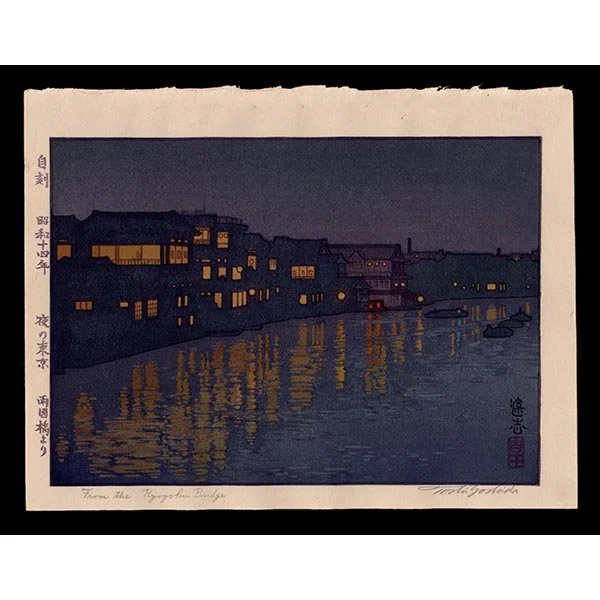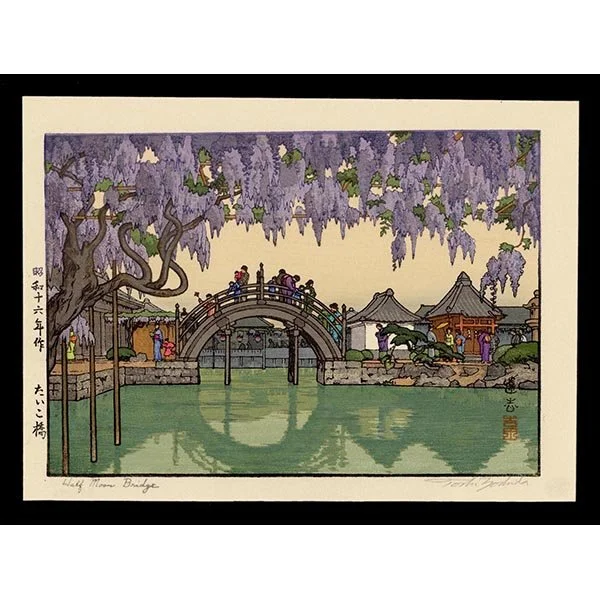Details
Toshi Yoshida was the oldest son of Hiroshi and Fujio Yoshida. In early childhood, one of Yoshida’s legs was paralyzed. Unable to attend school, the young Yoshida enjoyed watching and sketching animals as well as being in his father’s print shop. As Yoshida grew older he showed interest in making prints and under his father’s tutelage started carving and printing in the family studio. Yoshida carved and printed his father’s designs.
Yoshida’s first original designs date to the mid-1920s, and his career started in earnest in the late 1930s with a series of chuban-size landscapes that advanced his father’s style but demonstrated a sensitivity and flair for color that was all his own. In the 1950s, after the death of his father, the young Yoshida experimented with various styles and began working in abstraction concurrently producing highly representational designs. Like his father, Toshi Yoshida traveled the world in search of inspiration and produced a large body of work featuring foreign subjects. Yoshida’s diverse abilities as well as the spirit of experimentation set himself apart from his father, advancing his own style and artistic perspective, and bolstering the Yoshida family legacy.
A charming night scene in bustling Shinjuku, we see various shops alit in the glow of paper lanterns and the buzz of early electrical light that spills out into the street. People stroll down the path, perusing the various shops that line the thoroughfare. The young Yoshida’s treatment of this design is charming and poetic. The composition is compelling, his use of light is masterful, and his sense of color anticipates his later masterpieces. Of particular note is the artist’s treatment of the figures. Their facial expressions are well articulated as well as their clothing—hinting at their personality. Unlike his father’s work, which most often utilized people as part of the landscape’s composition rather than the central subject, Yoshida’s treatment of the landscape and the various distinct figures that populate it are on equal footing. The design is not a quaint nostalgic Shin Hanga work but a design that advances a specific time and place. “Shinjuku” is one of Toshi Yoshida’s earliest works dating back to his first chuban-size prints produced in the late 1930s. At first blush, the work appears reminiscent of his father’s work but a closer examination yields the young artist’s own voice..
Connoisseur's Note
This work is a rare lifetime impression produced by the artist himself not a later posthumous impression done after his death. Lifetime impressions bear a live pencil signature at the bottom right margin, in contrast to the later one with stamp signatures that closely resemble pencilwork. Later impressions also showcase the name and information of the current publisher on the reverse, which this print lacks. This impression was never framed or displayed for extended periods of time ensuring the colors are in a pristine state of preservation, appearing as vivid today as they were the day the work was produced.



